Your cart is currently empty!
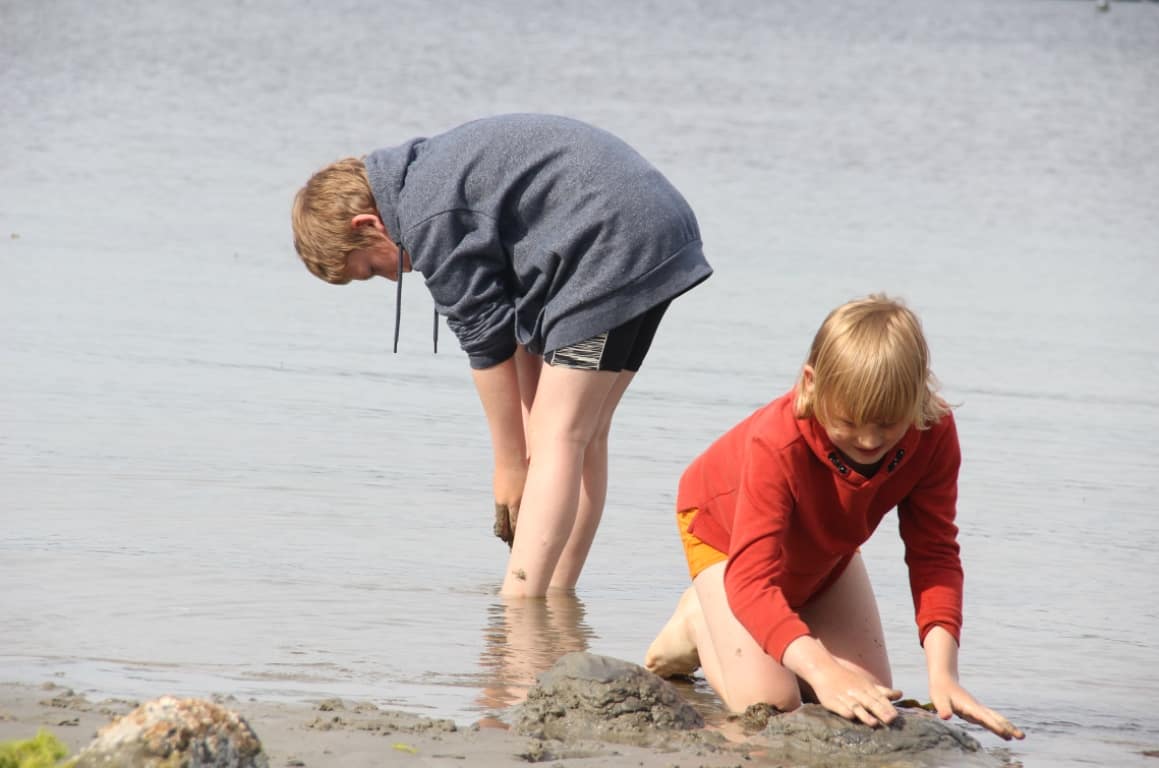
How to Turn Everyday Adventures into Educational Outings
Every time you step outside your house, there are moments and opportunities for your children to learn. Nature walks, park visits, and neighborhood explorations can be more than just a way to pass the time – with a little intentionality, you can transform them into adventures that spark curiosity, promote independence, and cultivate a deep appreciation for nature. Today, Anna Stopinska-Lewucha, a UK mom of two boys, shares her experiences turning everyday outings into educational experiences that foster a love for learning, adventure, and exploration in her children. Her practical tips and creative ideas will inspire you to reconnect with your kids through the great outdoors and show you how to use nature and time outdoors to expand their academic knowledge and foster a love for nature and learning.
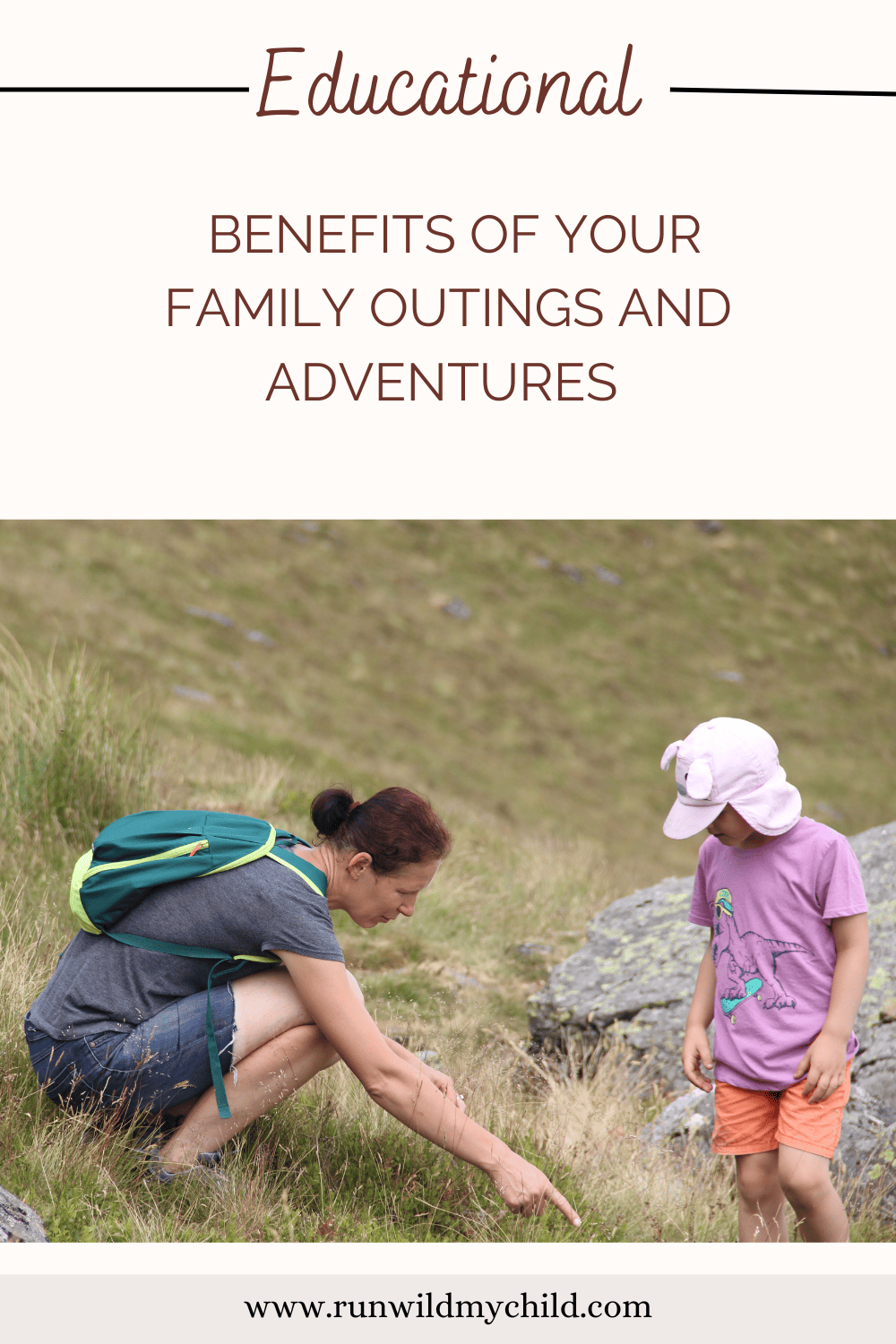
“Let the children be free; encourage them; let them run outside when it is raining; let them remove their shoes when they find a puddle of water; and, when the grass of the meadows is damp with dew, let them run on it and trample it with their bare feet; let them rest peacefully when a tree invites them to sleep beneath it’s shade; let them shout and laugh when the sun wakes them in the morning as it wakes every living creature that divides its day between waking and sleeping.”
The Discovery of the Child by Maria Montessori

Learning goes beyond school and standardized testing
Children who attend traditional schools follow their teachers’ teaching. And those teachers follow their countries’ national curricula, written by very wise people who know what’s best for our children.
Or do they?
Teaching is often dictated by national standards and exams (says a mum whose child’s full academic year is devoted to passing their SATS). The pressure schools feel to do well is immense and often dictates what and how they teach. However, hese very clever curriculum designers seem to have forgotten that our children are only children once. And the best learning doesn’t necessarily happen sitting still indoors for long hours reading, writing, and memorizing.
What is success anyway?
Children (and parents) are told that kids need to comply in order to succeed. But, succeed at what? Is this how “success” is actually measured? And what is success?
Very likely, success is considered to be a well-paid job and a house (actually, a multi-year mortgage). I don’t necessarily want my kids to be this type of “successful.” Instead, I would like them to be curious, be lifelong learners, be excited about things that interest them, and (of course), be happy.
So, I chose to be my kids’ unofficial, out-of-hours (and unpaid) teacher. Below, I’ve outlined what my “teaching” involves. Encouraging your kids to participate in outdoor educational activities not only enhances their knowledge but also fosters curiosity, independence, and a love for the natural world. These educational outings can be done whether you homeschool or your kids attend traditional schools. These simple yet effective strategies will help your children become well-rounded, curious, and independent. My hope is to convince you that, as a parent, you have educational superpowers and help you gain the confidence to use them.
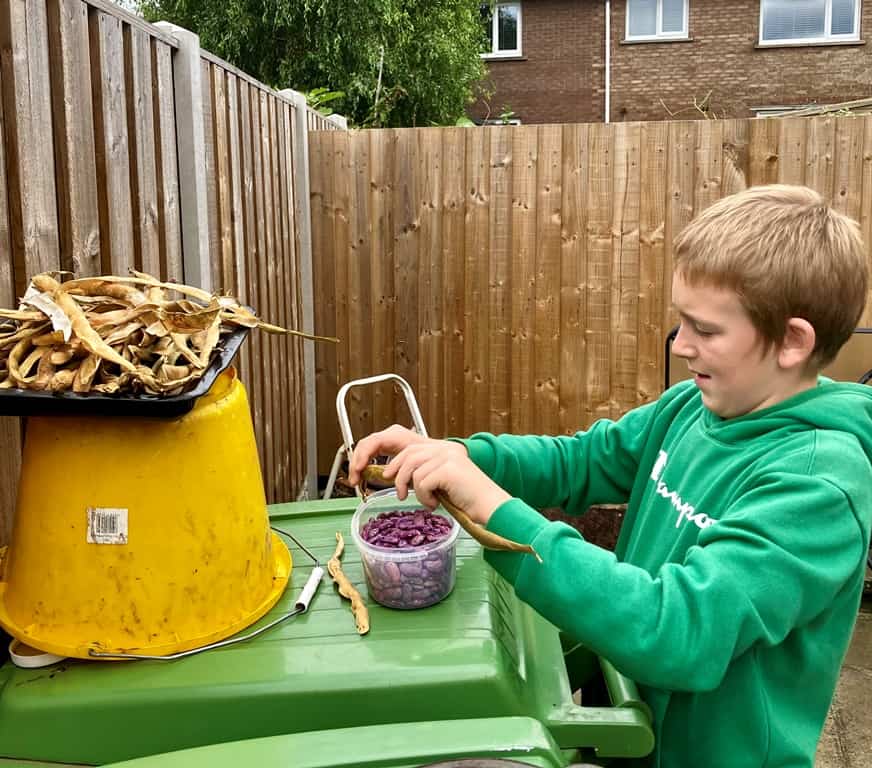
Learning can be fun and natural
My children are expected to follow certain rules at school, but at home, they are allowed to be silly and go bonkers! I even try to join in whenever I can. We try to get outside to burn off that energy as much as we can. Honesty, it’s so good for my sanity to get out of the house and have fun outdoors.
Our educational outings aren’t elaborate or take a lot of time. For example, recently, we went fell-walking (hiking), and we took my kids’ friend with us. After reaching the top of the hill and eating a snack, the boys started running down and then decided to roll downhill. Again and again, they rolled down the hill! Their laughter grew with each roll and got even wilder when they discovered they rolled through sheep droppings!
When we got home, naturally, the conversation was all about sheep (and sheep poop). We discussed the sheep’s diet, watched videos of sheep chewing, and googled why they chewed (and found it disgusting). Then we looked up different types of animal poo. Did you know that there are so many different shapes and sizes? And all shapes, colors, and sizes have an explanation!
What started out as a simple hike outside turned into an entire day of learning in a fun way. Just being outside and interacting with nature sparked their curiosity and led us to learn and discover so many new things. It was a great, fun, unstructured half-term day.
(And I learned that greenish sheep droppings marks wash off easily in 40 C wash!)
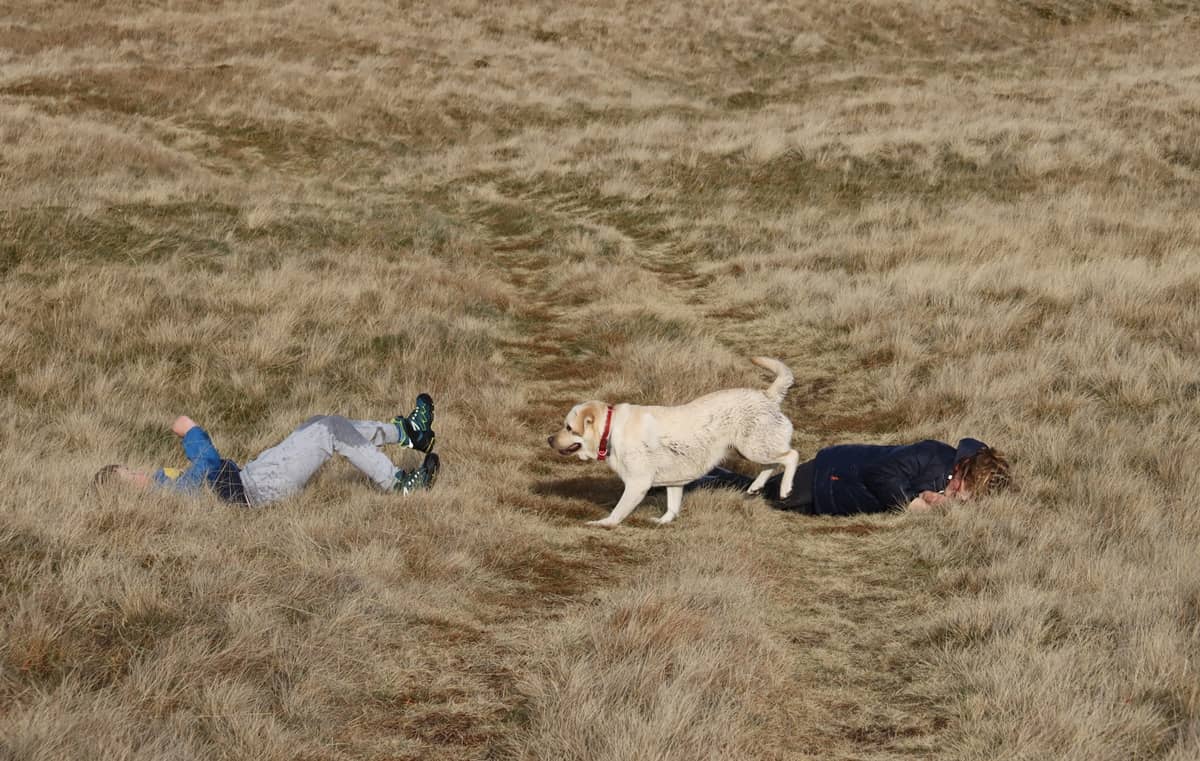
Day off school is a micro-adventure day
I don’t really know how it started, but ever since my kids were little, whenever they had a day off school, I took them out on my own, and we explored our local area. This time with them has become so precious to me. We rarely do anything fancy, but we’ve always included a visit to a nearby forest or seaside in our routine.
I love to think that once they have grown, their days off will be structured around outdoor adventures. I hope these trips mean as much to them as they do to me. Even when the weather is bad, we still get out of the house. Sometimes, we’ll visit a local museum, check out books at the library, or enjoy a membership at our local aquarium.
Indoor or out, each educational outing has so much potential for connecting kids with nature and learning new things. Planning outdoor educational activities is a great way to make the most of your time outside, combining fun with hands-on learning that reinforces what your kids are studying in school.
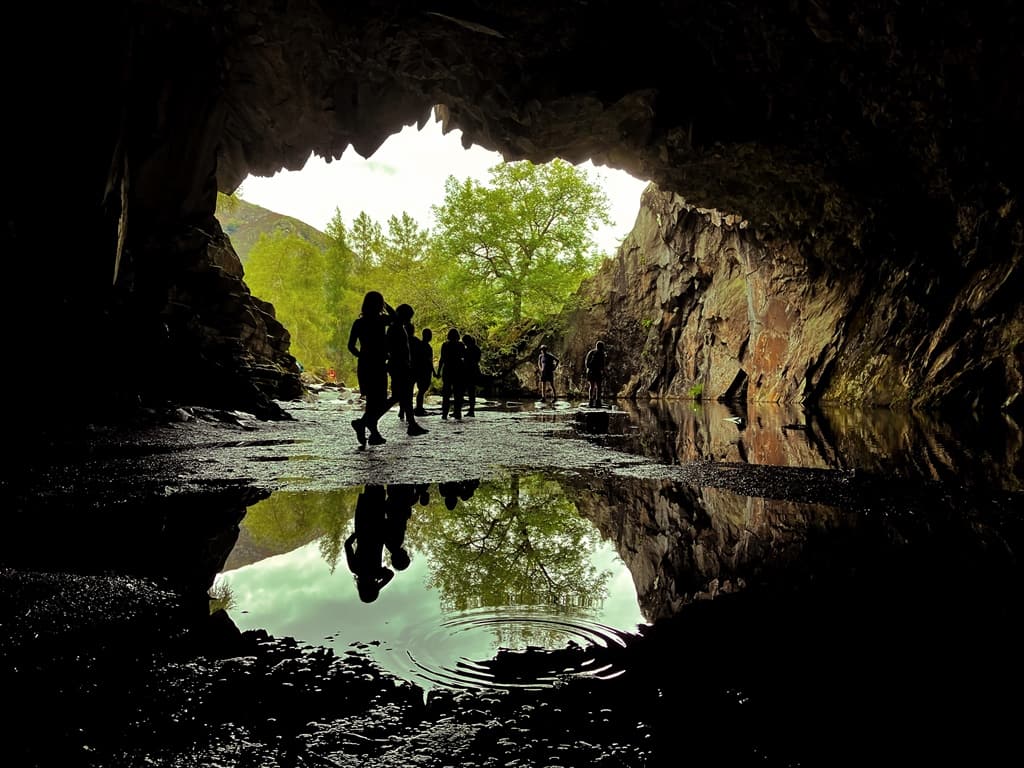
Rain does not count as “bad weather”
We live in a beautiful part of the world where the grass is usually green. It’s green because we get a lot of rain throughout the year. So, if we let a little rain keep us indoors, we’d never go outside! As such, we don’t consider rain a reason to stay inside. After all, there’s no such thing as bad weather, right?
We learned this concept long before we had kids. One Easter holiday, we stayed at shared accommodation and an elderly couple staying there told us that if they had been bothered by the weather in the UK, they never would have done or seen anything! Challenge accepted. We realised that our British friends rarely complained about the weather and decided that this was the way to go.
And this is the world my kids live in: with green grass and grey sky, wet, windy, and muddy most of the time.
But, we make the best of it. We wear our wellies and waterproof clothing and the kids love it. We get out of the house every day, even if the weather is vicious. They do it because this is our “normal.” We’re made getting outside a priority. It hasn’t been easy, but the more you do it, the easier it gets!
And yes, we still have an occasional moan or complaint when the winter days are dark and short, but overall, my kids don’t know any different and they don’t mind the “bad” weather.
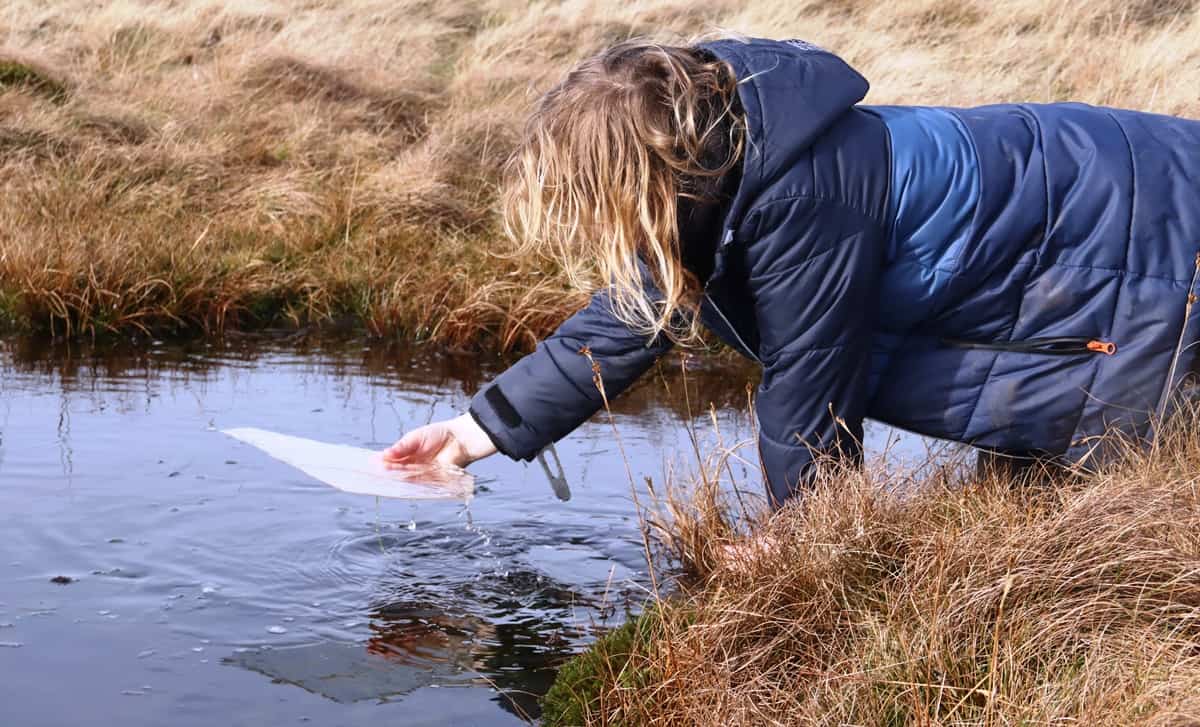
Exploring historic places with kids
One of my favorite ways to make our outdoor explorations educational (in a fun way) is to supplement what they’re learning in school with real-life, out-of-the-classroom, hands-on experiences. Whether it’s reinforcing a science lesson on plant life by visiting a local botanical garden or exploring the concept of geometry through natural shapes and patterns on a hike, I think these outings help bring abstract concepts to life. When kids can see, touch, and interact with what they’re studying, their understanding deepens, and their enthusiasm for learning grows.
When my youngest child was learning about the Roman Empire at school, I decided that we would start our first big family challenge. We live near Hadrian’s Wall, which is a former defensive fortification of the Roman province of Britannia, begun in AD 122 during the reign of Emperor Hadrian. It was a stone wall with large ditches in front and behind, stretching across the whole width of the island, and the perfect symbolic way to weave some history into our outdoor adventures.
Our challenge was to walk the entire Hadrian’s Wall Path!
Connecting with history through hiking
We started to walk it, bit by bit, usually 2-3 miles at a time. These walks allowed for discussions about how the Romans might have felt in our difficult weather conditions, how their diet changed, how incredible it is that parts of the wall survived for almost two thousand years, and how their language influenced the English language. We talked about old times and modern times, including the late, upsetting event of the felling of the famous sycamore tree.
The Path took us through diverse terrain, among different trees, fields, farmlands, and farm animals, at different times of the year. We had picnics and bought some treats at self-service “honesty sheds.” We often saw the AD122 Hadrian’s Wall country bus, which helped us remember the date (year 122) when the construction of the Wall began, and met many interesting people along the way.
By definition, a challenge is meant to be difficult, it’s a mixture of effort and satisfaction, and our Hadrian’s Wall Path challenge was certainly that! It came with a lot of interesting “side effects” such as piqued curiosity for history, a love for the area, and a deep connection to the land.
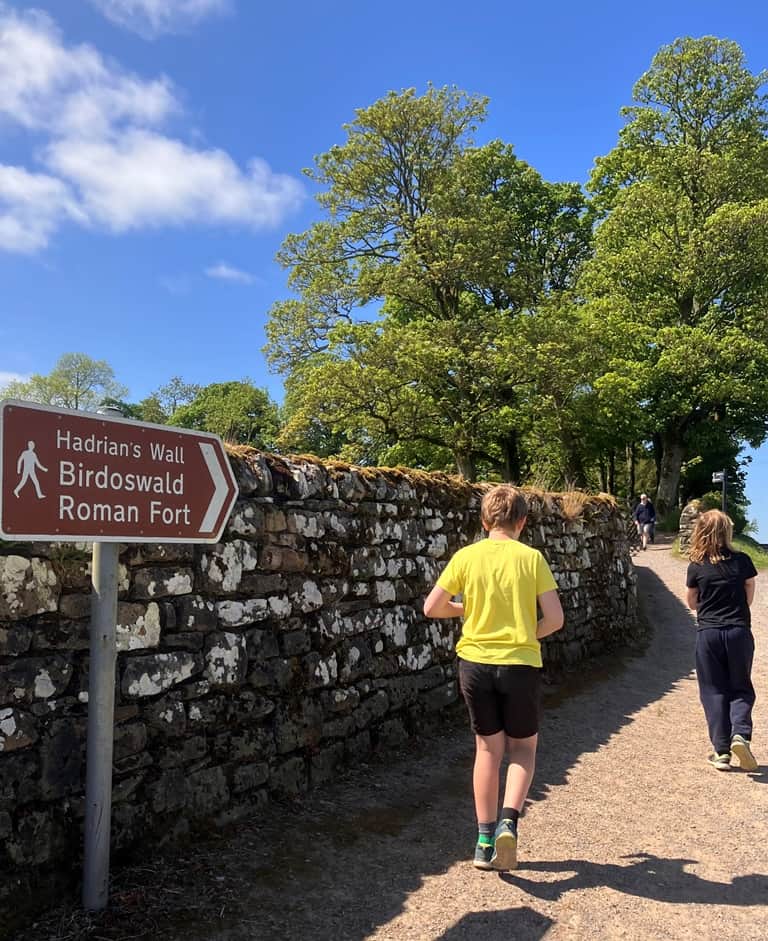
Turning beach treasures into educational outings
A trip to the beach can easily be transformed into an exciting educational experience for kids. The ocean can teach you about marine biology, environmental science, and even physics. I read somewhere that the sea is like a living museum, it keeps some objects in and sometimes decides to share them with us. During our years of visiting our local, although not very attractive beach (it has large pebbles and stones, no sand), we’ve found many objects that the water threw out, and my kids found them interesting. These treasure have made this their favorite beach to explore!
I’ll always remember the day when my son found something flat and brownish on a beach. I assumed it was part of a plant, but he told us it was a baby shark. Just to prove him wrong, we looked it up and to our total surprise, learned that he was, in fact, correct! He was holding an egg case called a mermaid’s purse.
Of course, we made a fuss, telling him how impressed we were with his knowledge. He told us he learned this at our local aquarium. When my kids were little, we bought a membership to a small coastal aquarium in a nearby town because it’s a friendly place, and both children enjoy our visits. I had no idea he was learning so much and paying attention to details when we visited. It was such a fun way to put that knowledge to real-life experience.
Observe, identify, learn
If you want to turn your beach adventure into an educational experience, it doesn’t take much. Start by encouraging your children to observe and identify different types of shells, seaweed, and marine creatures they find along the shore. Looking them up and learning about them turns it into a mini marine biology lesson. You can also discuss the tide cycles and how the moon influences the rise and fall of the water, which can be a fascinating introduction to basic astronomy and physics. You can also teach them about the importance of protecting our oceans by doing a beach clean-up together, explaining how litter affects marine life and ecosystems.
We also went beachcombing in Northumberland and looked for “sea glass” and “sea pottery” (some with beautiful patterns). We found the history of these items absolutely fascinating. Sea glass and pottery are broken pieces that were thrown into the sea in the 18th and 19th centuries. Smothered and smoothed by water, they are now often used to create jewelry. That day we brought home a small jar with our precious findings.
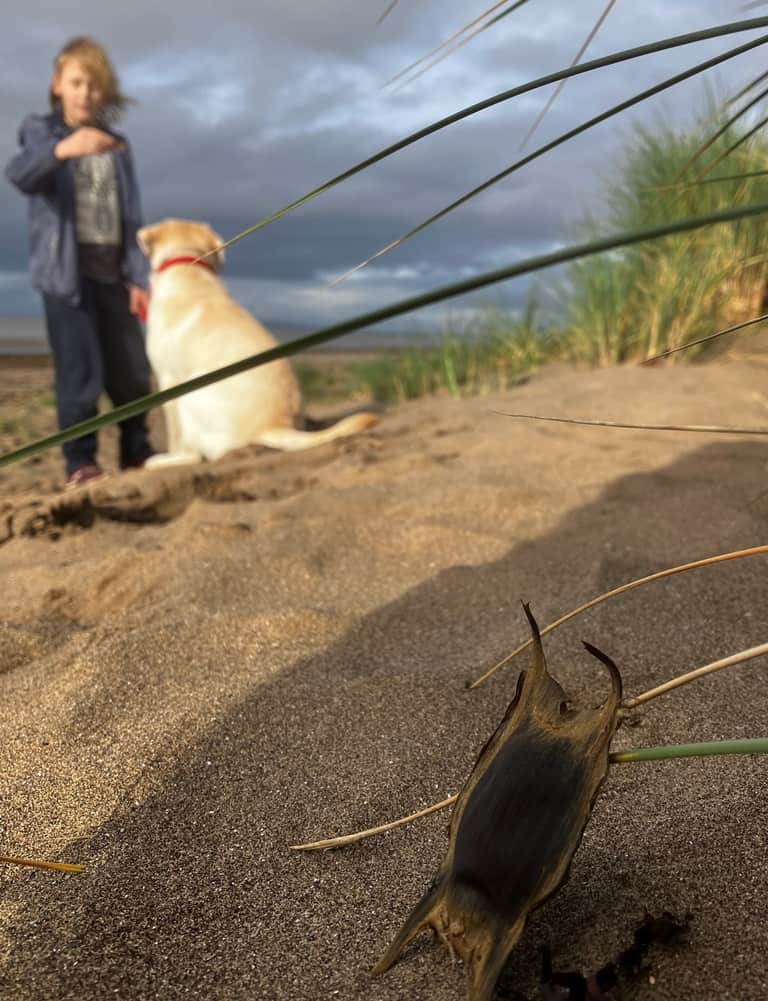
Educational opportunities through camping
If we look at camping through the lens of comfort, it is not at the top of the list. Camping requires a lot of energy, effort, preparation, knowledge, and resistance to little discomfort. However, camping in its raw beauty is where and when we make the most interesting memories as a family.
A camping trip offers a wealth of opportunities to turn the great outdoors into a classroom for kids. As we set up camp, I like to involve the children in learning practical skills like choosing the spot for our tent (observation skills), pitching a tent (following directions and teamwork), and building a safe campfire (chemistry). At night, the dark skies provide a perfect backdrop for a lesson in astronomy—pointing out constellations and planets and even discussing the phases of the moon.
While they have to accept that unplugging is a part of camping adventure, they find ways to make the most of their time. This requires creativity and imagination. We particularly enjoy camping on farms, where farmers encourage kids to be near animals and where they can see what everyday farm work involves, which is a whole other set of skills and learning experiences.
Life lessons learned through camping
Camping teaches my kids to accept some discomforts and enjoy the simplicity of just being together and being outdoors. Life is not always comfortable, but you can survive (and thrive) without modern conveniences and comforts. It’s important for kids to learn those lessons.
I also appreciate that camping requires flexibility, which is especially valuable for my routine-loving, autistic child. Last summer, I took him camping on my own and it rained continuously for three days. We were wet and cold, and our clothes were soaked with rain. To make it bearable, we spent as much time as possible exploring the area (soaked, of course) and returning to the campsite for dinner and sleeping. That can be really hard for kids with sensory issues, yet, he accepted it as it was and adjusted without too much protest.
My kids also love coming back home from our camping trips. They enjoy their after-camping bath soak in the bathtub, the luxury of not sharing toilets with other people, cupboards stocked with their favourite snacks, a fridge full of food, and having their devices charged. They appreciate home (and all its conveniences and luxuries) even more after camping. Camping trips are important gratitude lessons, great fun, and a good reminder that we take the comfort of our own homes for granted.
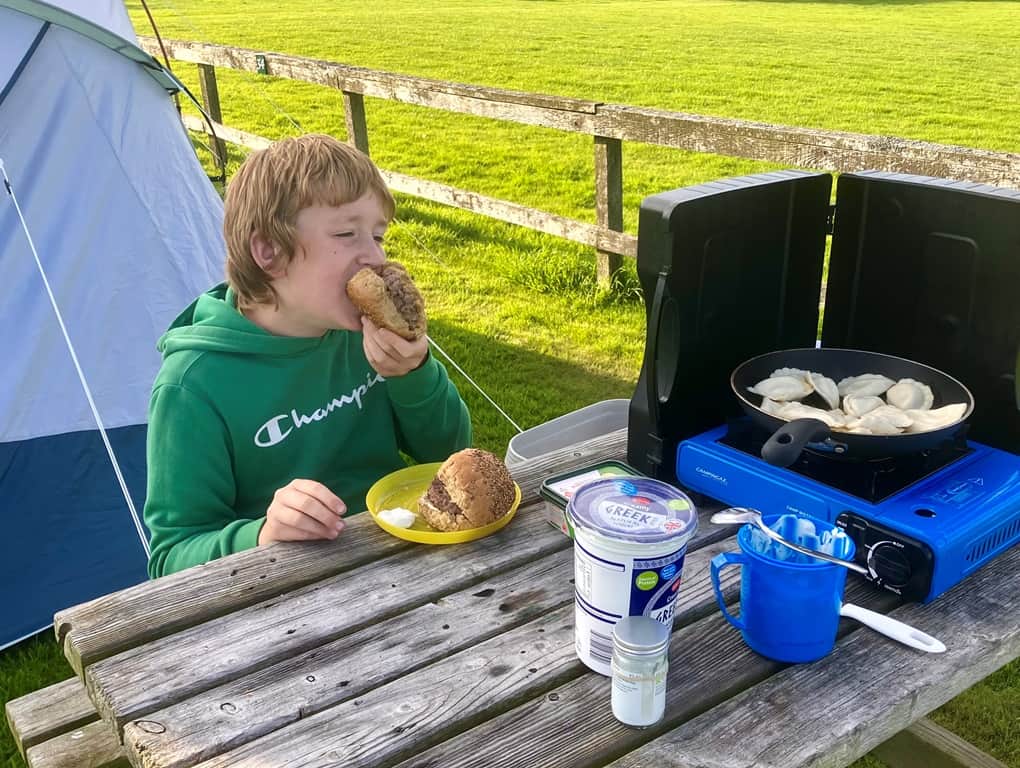
Learning about the past through outdoor experiences
Since we have established that today’s homes are filled with modern conveniences that make life comfortable and easy, my next recommendation is to visit places where people lived in the past so kids can learn about just how far we’ve come. I recommend taking them on visits to historical sites, museums, or recreated villages where they can see firsthand how people lived in the past. These visits offer a tangible connection to history, allowing children to explore homes without electricity, see how families cooked meals over open fires, or learn about the labor-intensive processes of washing clothes by hand or growing food.
My children really enjoy going to open-air museums and visiting castles and old settlements. Such places not only help us appreciate the cosiness of our homes but also give us insight into the lives of people who lived long ago. Of course, these places are packed with educational facts and figures.
How people lived in the past
I don’t think (I hope not) my kids are the only ones who are fascinated by the very practical elements of the lives of people from the past. They don’t seem to get bored of exploring, for instance, how people used their toilets and where all their sewage went. And, they always get put off if a display includes any objects used for punishment or public humiliation (but enjoyed being pilloried for a photo). They usually enjoy looking at children’s toys and furniture and show very little interest in what schools used to be like (especially after learning what the long wooden rulers were for).
A few years ago, we explored the north of Scotland and visited Skara Brae. The Neolithic Orcadian village amazed us all, but for my kids, the sight of stone furniture made and used long before the Egyptian pyramids (and schools talk a lot about Egyptian pyramids) was an unforgettable experience that they still remember to this day.
By stepping into the shoes of people from different eras, kids can gain a deeper understanding of the advancements we often take for granted today and develop a greater appreciation for the conveniences of modern life. These experiences not only make history come alive but also foster a sense of gratitude and perspective on how human ingenuity and hard work have shaped the world we live in.
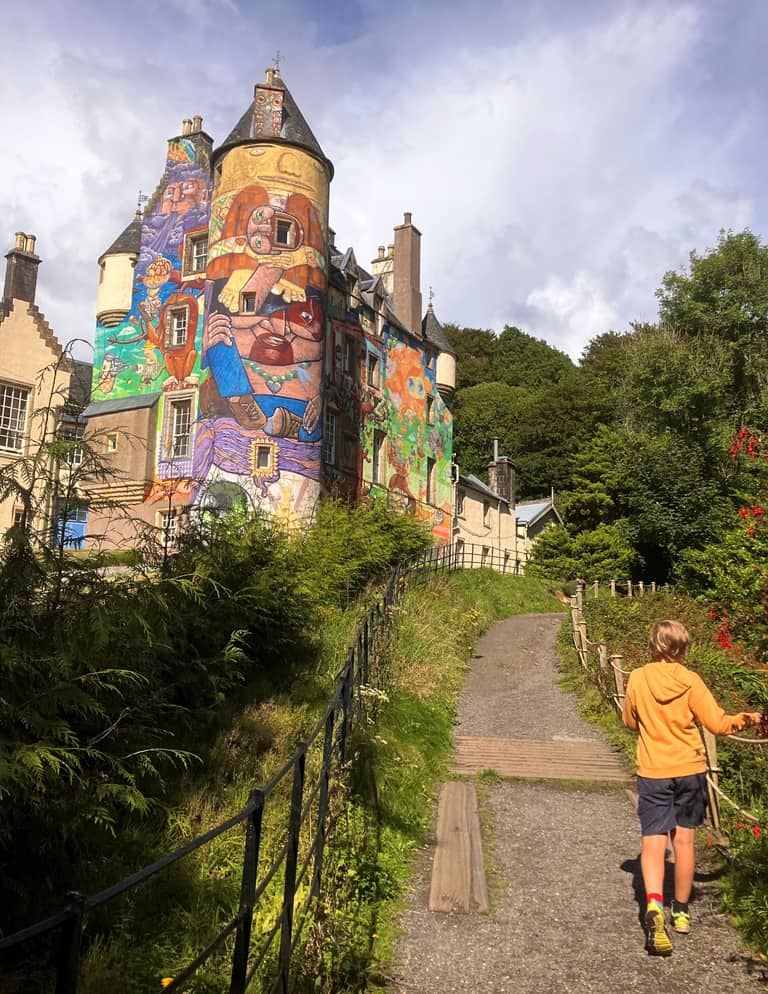
Nights are for adventures, too
A nighttime outdoor adventure can be a magical and educational outing for kids, opening their eyes to the wonders of the natural world (and educational opportunities) after dark.I find that parents are, by nature, not very keen on night-time adventures. However, nights are amazingly stimulating and fascinating for children.
The first and most obvious example of a nighttime outdoor adventure is observing the sky. Children love stars, planets, and the Moon. And a warm sky-clear night is a perfect opportunity to show them what’s hidden from us during the day. We use the Sky Guide app, and both kids found it interesting that everything “out there” is labeled on the phone screen.
My neurotypical child surprised me the first time when we used the app, stating that he knew the names of constellations from school, because they had been learning about ancient Greek and Roman cultures at the time. I can only imagine his pride when he found the connection and it all became more meaningful to him.
Bring along a telescope or binoculars to enhance their stargazing experience, and explain the science behind what they see. You can also engage their senses by listening to nocturnal animals, like owls or crickets, and discussing how these creatures have adapted to life at night.
Night hikes
Another great night-time experience is walking in the darkness. We have our favourite fell (hill summit), that we sometimes climb, to see the setting sun. After the beautiful spectacle ends, we start walking down, getting used to reducing visibility. We always have head torches with us, but our goal is to walk down without them as long as we can. As we don’t have dangerous wild animals in the UK, such adventure is safe (and we know the route well) and allows for great sensory experiences.
It’s a great opportunity to teach kids about the importance of our senses in low-light environments, encouraging them to rely on hearing, touch, and smell as much as sight. Additionally, sometimes, we discuss the concept of light pollution and its impact on wildlife, sparking a conversation about environmental stewardship.
Walking on the beach in the moonlight is also interesting and very different from walking down the forest.
Additional resources
If you’re looking for more information, we have a couple really great articles and resources about getting outside at night:
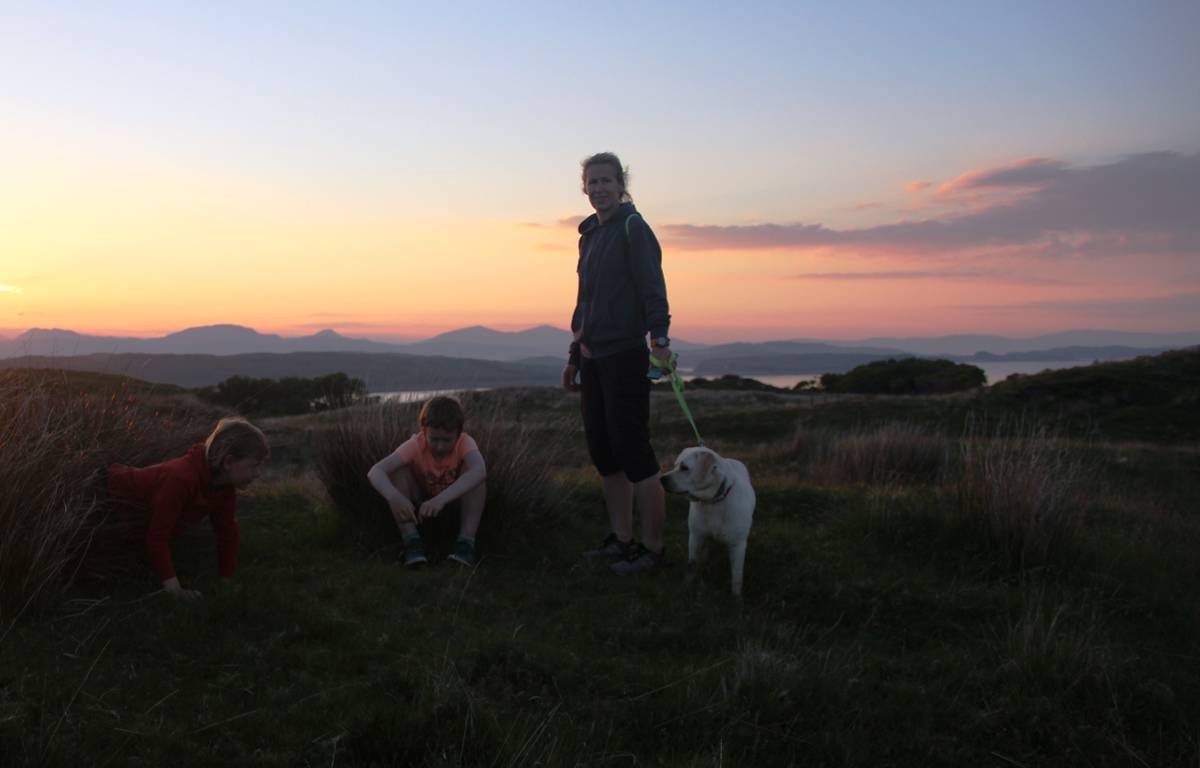
Raising future environmentalists
Taking kids outside and encouraging them to be part of nature helps to form an emotional attachment with the natural world. It’s not about showing them pictures of animals suffering consequences of climate change (I wouldn’t show them to my kids, but one of their schools did), or videos of natural disasters. Schools are, of course, talking about this topic, but it is up to us us, parents, to consistently encourage our kids to feel that they are part of nature, to develop an emotional connection that will make them passionate about making changes and making future decisions.
Our actions will show them more than any workshop, class or lecture. We are their bridge to the planet and we need to be good examples. Let’s reduce our own consumerism, recycle waste, use back gardens to grow vegetables, avoid unnecessary waste, repair items that can be repaired, make the effort and use public transport, and avoid plastic packaging. And, hopefully, by simply being with them in nature we will encourage them to think that nature is their happy place and they should take good care if it.
If you’re interested, we have a great resource for helping your family become more eco-friendly, one little step at a time: Sustainability Challenge & Action Guide
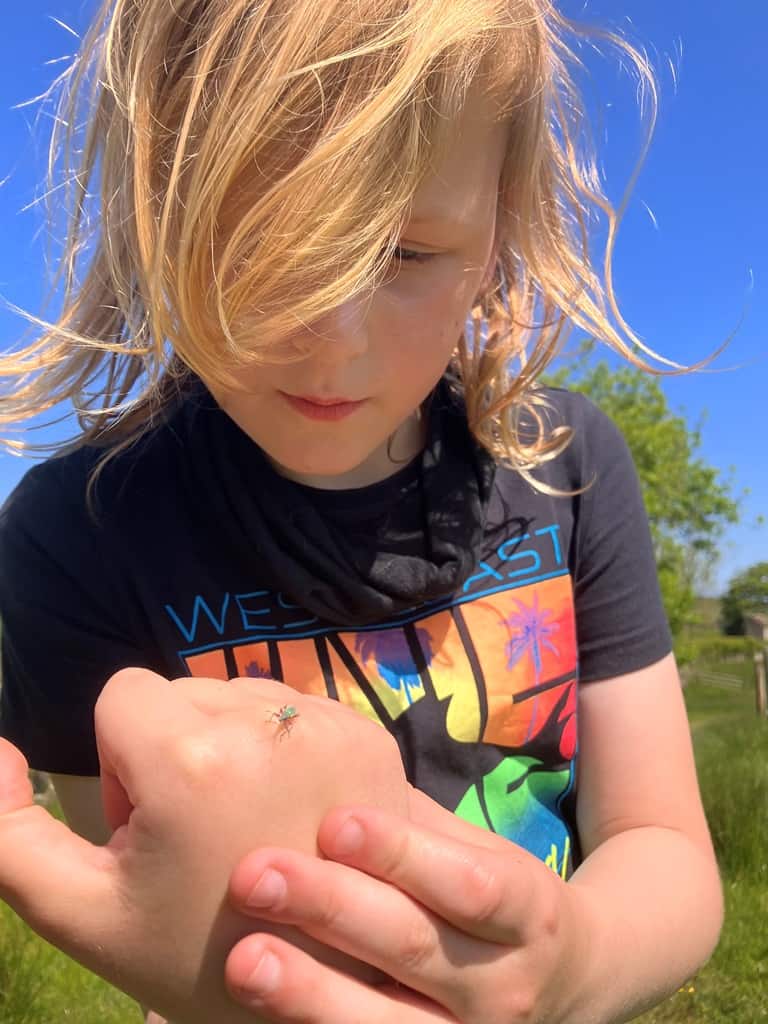
Out-of-school teaching and learning
If you really want to make sure your time outdoors is educational, it’s easier than you think. Incorporating outdoor educational activities into your family’s routine doesn’t have to take a lot of time or prior knowledge. You can learn right along with them! It’s easier than you think to turn everyday adventures into valuable learning experiences for your kids.
Here are some ideas on how you can use after school hours, weekends and holidays in nature to enrich your child’s knowledge of traditional school topics. By engaging in outdoor educational activities, children can deepen their understanding of school subjects while developing a stronger connection to nature.
Math
- Count, add or multiply your steps & things around you
- Collect nature treasures and count them (e.g. shells, leaves, flowers)
- Teach about weight by comparing different objects (e.g. rocks and sticks)
- Create patterns or mandalas with nature objects (leaves, rocks, sticks, pine cones)
- Teach about length (long and short sticks) and distances (how many steps did we do today and how many miles or kilometres that was?)
- Measure earthworms
- Explain big and small, tall and short using examples found in nature
- Demonstrate the meaning of volume and capacity
English/language arts/vocabulary
- Just talk to your child, and engage with them while you’re out in nature
- Ask open-ended engaging questions while you hike (e.g. by asking what they think about something)
- Use different adjectives to describe the world around you (e.g. fabulous, frightening, monumental, fantastic, terrifying, colorful, odoriferous)
- Encourage them to use their imagination and tell you as story about the place you’re exploring
- Read road signs or information boards together
- Visit a forest with a themed trail or storybook trail (e.g. we have a Gruffalo trail near us and it’s one of my kids’ favourite place to go)
History
- Take your child to a place where historic events took place
- Take them to open museums, heritage sites, villages, and castles
- Visit places of religious importance
- Think about place names
- For example, the area where we live in England was influenced by the presence of Norse and Roman in the past which is reflected in the names of places. Cumbrian hills aren’t called “hills” or “mountains” by the locals, they are called “fells”. “Fjell” in modern Norwegian means “mountain.”
- Research famous historic figures from your area.
- For example, a popular surname in Cumbria is Armstrong, and so our little place in the world is linked to the moon landing. Apparently, Neil Armstrong’s family has roots in northern England and southern Scotland.
- Try a bush craft workshop to give them an idea about what our ancestors could have made with materials available at the time
- Re-enactment events and medieval fairs are full of child-friendly attractions and historical excitement
Geography
- Talk about the weather when you are outside (it’s very British, I know)
- Use and explain geographical terminology when away from home (e.g. hamlet, village, town and city; lake, sea and ocean; hill, mountain and valley; beach, cliff, coast and harbour)
- Reading and understanding a map is a great skill
- Geocaching is a good way to introduce digital maps
- Visit a famous landmark or monument in your area
- Find and visit some places with silly, surprising or unusual names in your area
- For example, our summer camping trip to Scotland took us to Moscow, which is in southern Scotland.
- If you live near a river, find where it starts and see how the river changes
Science
- Build a bug hotel in your garden
- Have a campfire and cook your own food
- Create a mud kitchen (a very simple idea, and kids love it)
- Try birdwatching. You can start in your garden or somewhere near home.
- Go around and explore a garden or forest to find mini-beasts in their natural habitat (get yourself a pocket microscope)
- Plant some flowers for bees and butterflies
- Plant a vegetable garden
- Do no-mow May (if your neighbours don’t object)
- Going outside all year round can help to understand what happens to water in different temperatures
- Identify trees, plants, mushrooms and berries
- Visit a working farm where children can see what farming involves
- Go on a scavenger hunt (download our free scavenger hunt bundle)
- Collect rubbish in a public space (e.g. park, trail, beach)
- Explore different environments (e.g. forests, beaches, wetlands, mountains, fields) and talk about what makes them special
- Have a rest and enjoy looking at the sky
- Show your child what’s happening in your compost bin from time to time
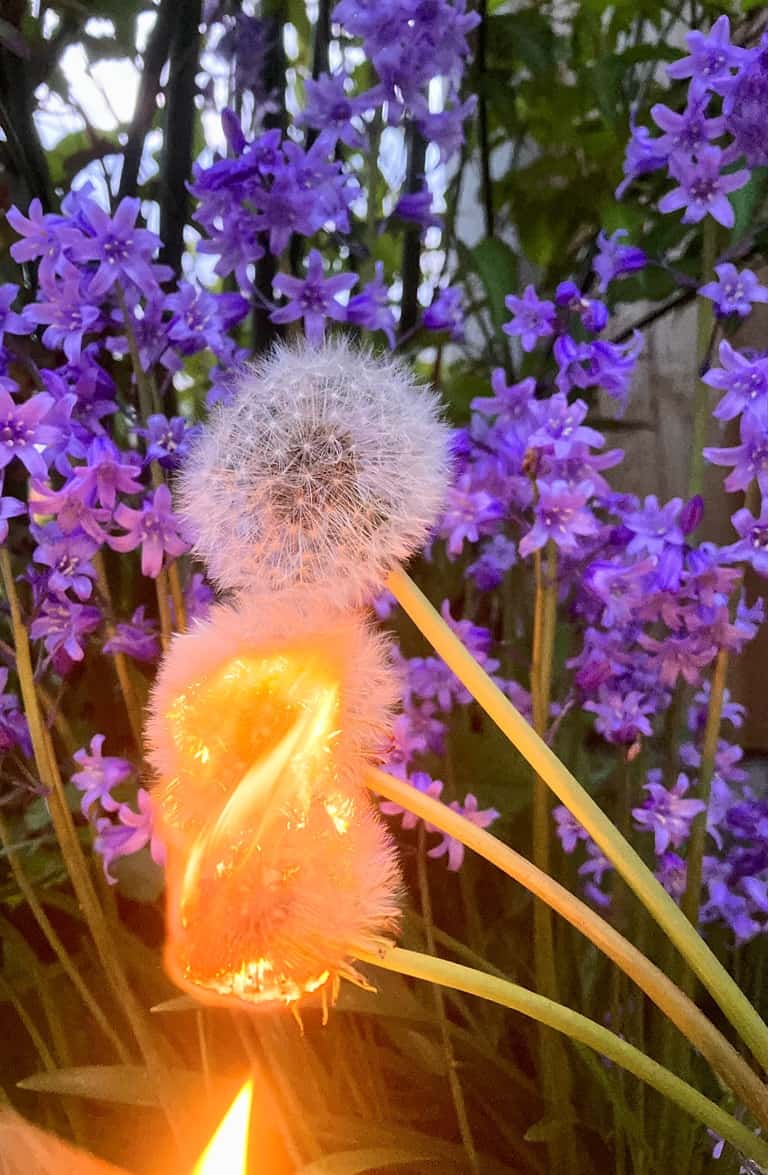
Arts
- Leaf rubbing, a simple and easy activity, is great for children with short attention span
- Chalk or water drawing on pavement
- Set up an easel outside and paint
- Visiting an art or sculpture trail
- Making mud pies, with some decorative elements (e.g. grass, pine cones, sticks or flowers)
- Making a collage from what they find on a nature walk
- Paining with their hands and feet
Sensory enrichment activities
My personal interest in sensory integration developed when my older son was diagnosed as autistic and I was looking for ways to support his sensory development. Run Wild my Child has published an article which I dedicated to Autism and Nature. However, sensory integration is important to every child’s development, and here are some ideas for sensory outdoor activities:
- Take a forest walk and ask them to pay attention to what they can smell, see and hear
- Take them somewhere where there are rocks they can climb
- Take them to a beach and allow them to walk around barefoot
- Let them walk barefoot on grass, leaves and moss
- Play animal movements
- Encourage them to carry sticks, branches, rocks and wood for open fire
- Use playgrounds
- Play balancing games on fallen trees, logs and rocks
- Make most of snowy season if you are lucky to have one
- Allow them to play in mud and dirt

Mental health benefits
In this article I’ve listed many educational benefits of taking our children outside and giving them time and space to play and learn. I’ve created this list to demonstrate that every time you take your children outdoors, they gain something from it. There are countless outdoor educational activities that can be tailored to your child’s interests, from nature walks that teach about ecosystems to stargazing that introduces basic astronomy.
However, in my humble opinion, the most important lesson we can give our offspring is to use outdoors as a way of finding themselves and of creating a bond with us and nature. This is what I want to convince you to do: to take them out and just let them be.
Nature allows kids to be kids
I love the idea of allowing kids to be their own teachers, of letting them explore outdoors at their own pace. Allow them to take risks, encourage them to use their senses, and of let them feel that they are in charge of their exploration. Whether it’s a beach day, a hike, or a camping trip, you can easily integrate outdoor educational activities to make these experiences both enjoyable and enriching for your family.
We live in an increasingly demanding and stressful world. Perhaps allowing our children just to be children, be wild and carefree when outside, is a good enough life lesson. Hopefully, teaching our children good habits of getting out and connecting with nature, with people who are important to them, in the way they feel is best for them, is what they really need from us.
Schools aren’t designed to teach children to be in nature, gain resilience, trust their own judgment, cope with life’s discomforts, and prioritise their own needs over societal expectations. But I can teach them these things; nature can teach them these things, and you can, too.
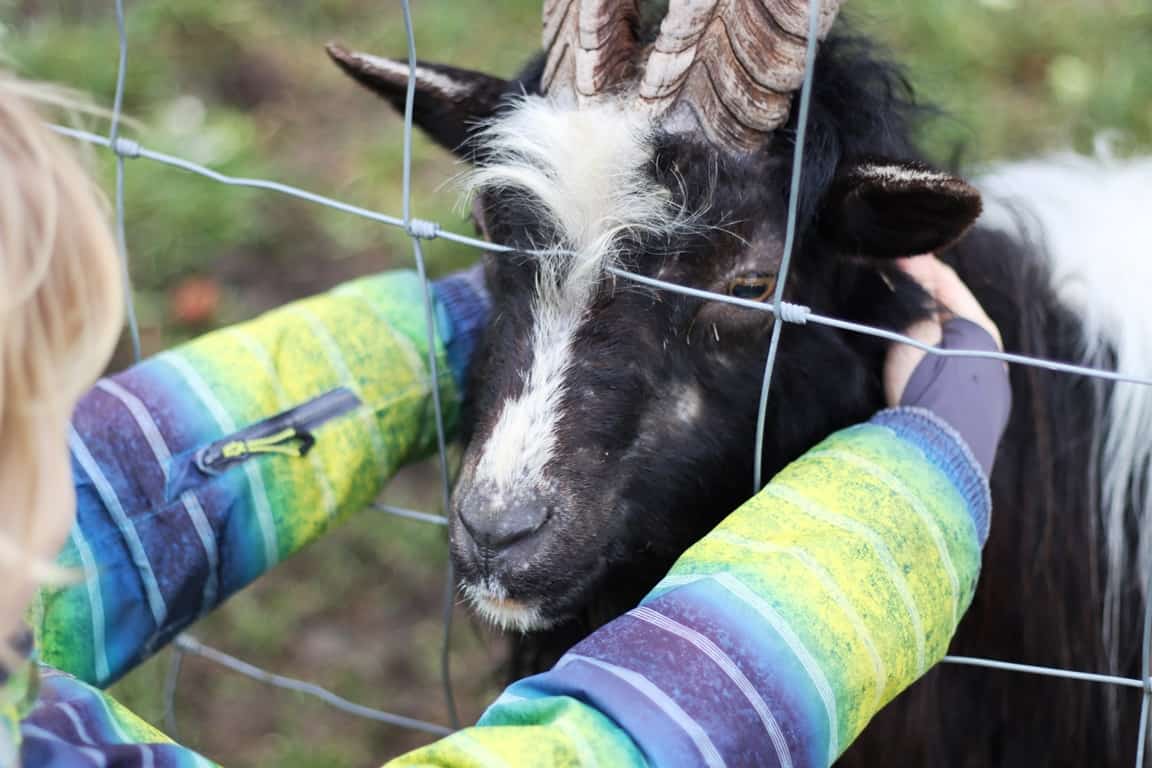
How do you use the outdoors to teach kids?
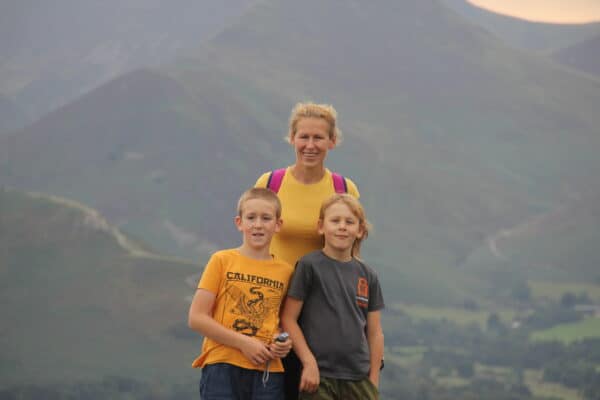
About the author
Anna is a mum of two energetic boys and the wife of Cezary. Before they started a family, they enjoyed backpacking and hitchhiking. Once the kids arrived, they adjusted their lifestyle and settled down in the beautiful Lake District, in the northwest of England. It’s often foggy and rainy where they live, but, they are outdoors in any weather. Anna is an ultramarathon runner, and Cezary loves triathlons, so, the children grow up being involved in hiking, trail running, cycling, all-year-round wild water swimming, and camping.
Stefan is 12 years old and has been diagnosed with Autism Spectrum Disorder and ADHD. Antek is a neurotypical 10-year-old. Anna believes in positive psychology, in creating good moments and capturing memories. She believes being outdoors brings them together as a family and advocates for children with additional needs to be encouraged to explore and play outside. She trusts nature is a natural playground, enriches and stimulates the senses, and this is where she sees her children happiest.
You can find more from Anna in the following online location:
- Instagram: @celebrating_my_boys_journey
- All RWMC posts: Anna Stopinska-Lewucha

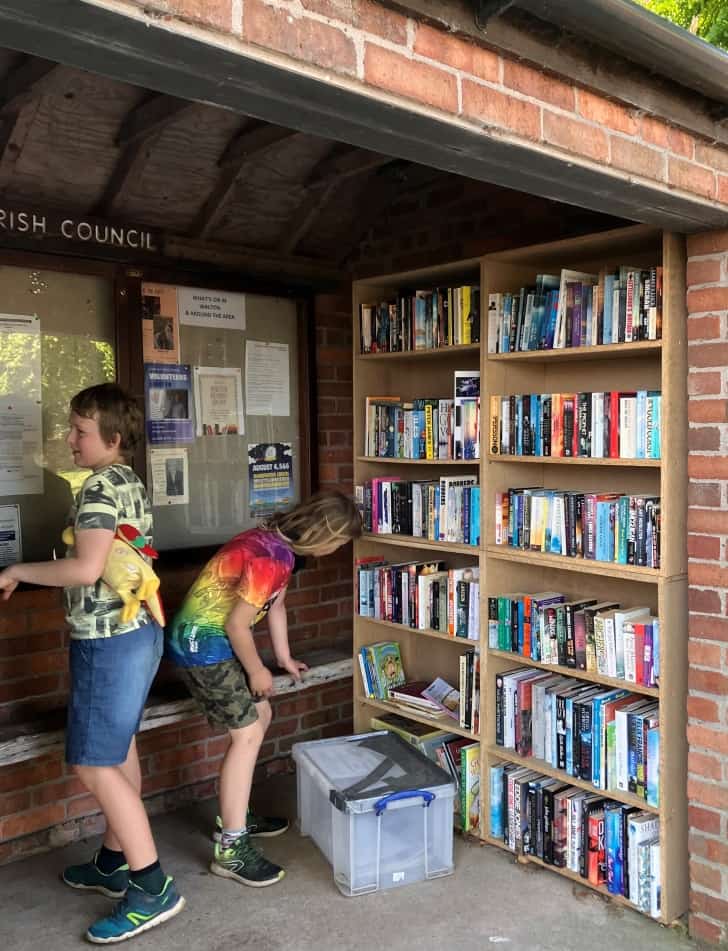
Leave a Reply